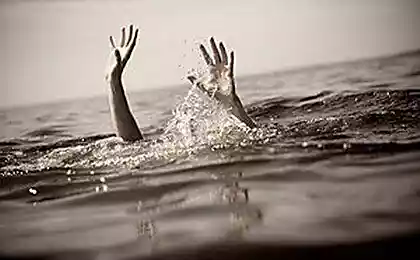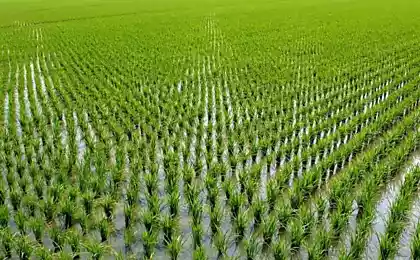671
People living on the water
We have only to admire the population of Bangladesh as to how these people can best adapt to the rising sea level. For them, the terrible future has come.
Residents of villages along the southern coast of Bangladesh must not only cope with one of the highest rainfall in the world; They also live in areas prone to cyclones on soils prone to erosion, which are only a few feet above sea level.
19 photos from here
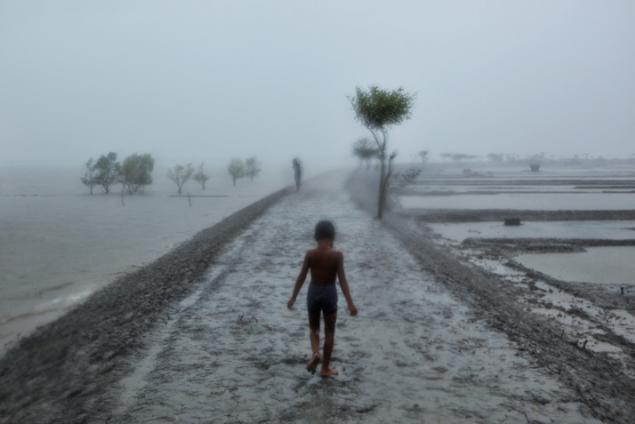
2. Hold the country afloat.
On saline soils of the south, farmers turned waterlogged rice paddies on land for growing crabs and shrimp.
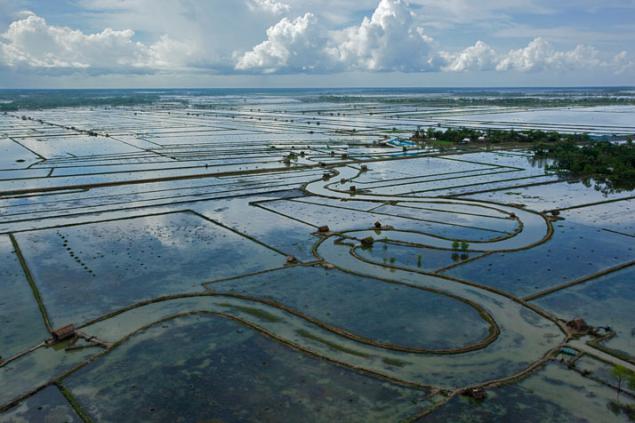
3. To cope with the sudden flood early farmer Abdur Kaddir (in the background) with its employees collect immature jute stems on an island near the Jamuna Kurigrama. Due to the changing climate the level of seasonal flooding has increased significantly.

4. Employees of the brick factory are trying to protect the plant from flooding near the river Turaga, near Dhaka.
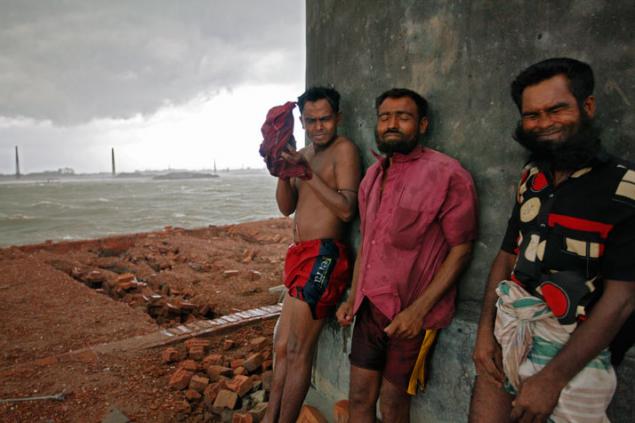
5. Attached to the city.
Under a heavy sky of the rainy season, migrants travel by train back to Dhaka after a visit to their homes, which are located north of the capital. On the other hand there are rice fields, fertile enough, but spoiled salinity in the remote southern areas.

6. Taxis in a boat crossing the river Buriganga, leading to Sadar Ghat - the main water gate of Dhaka, which provide connections to one of the most densely populated cities in the world. The capital Dhaka, located low enough above sea level, is one of the cities most exposed to the threat of rising sea levels.

7. The Tipping Point.
The slums of Dhaka, such as bark (background) overcrowded refugees are a huge problem for the city, which suffers from outdated infrastructure, high levels of poverty and constant flooding.

8. hot, narrow and crowded streets of Dhaka absorb the crowds coming out of mosques after celebrating the end of the holy month of Ramadan. One of the fastest growing cities on earth, Dhaka is full of migrants suffering from floods and storms countryside.

9. Living on an island on the river Jamuna, the fishermen and their families have long been accustomed to floods in their backyards. Depend on seasonal work, these people have long been the world's best experts to adapt to any situation in which the life and the changing climate, they can deliver.

10. High and dry.
In the case of high water on the river, the children from the village of Ali Dzhabed know what to do: climb the bamboo ladder, located in the courtyard and firmly. Seasonal workers who inhabit an ever-changing islands, located in the floodplains of the three largest rivers in Bangladesh, have long been accustomed to such disasters, the number of which is increasing every year.
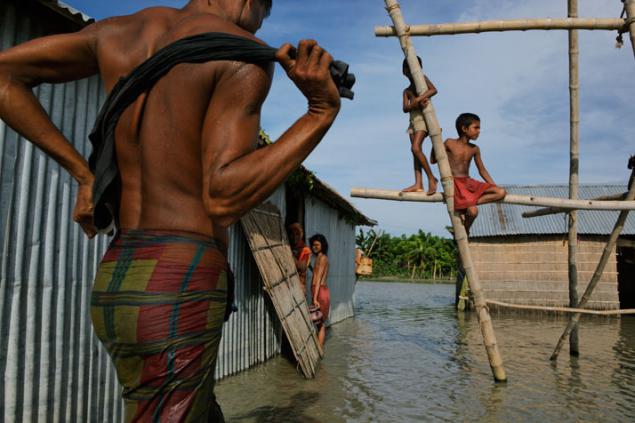
11. House home.
Standing knee-deep in water, the family Uddin going to dinner. They recently moved their home to the place, trying to avoid flooding in the area of the island Kurigram. Shortly before this photo was taken, the family was planning to dismantle his house and move again.

12. In search of the high ground.
The villagers joined forces to try to move house on Siradzhbad, an island on the river Jamuna, where floods are frequent. This mosque, exploded at noon, has been restored for the evening prayer.

13. Nothing is eternal in the Siradzhbade - the village is home to several hundred people, which is located on the island of the river Jamuna, north of Dhaka. In this photo, volunteers revive the village mosque, which from time to time it is necessary to carry, so it does not disappear under the water.
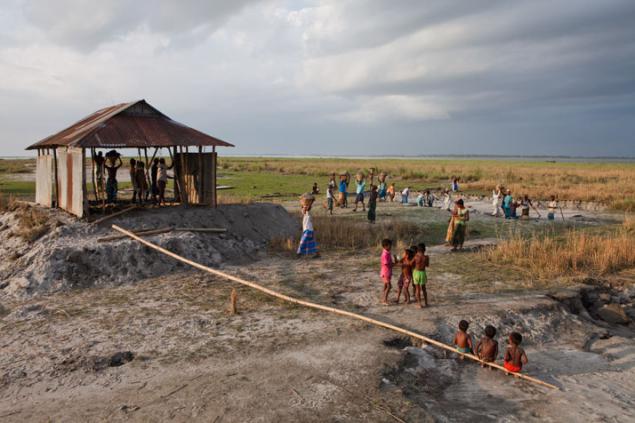
14. The mobile clinic on a ship, is supported by a charity called FriendshipBD., Serves hundreds of thousands of Bangladeshis living in the islands of the river Jamuna.
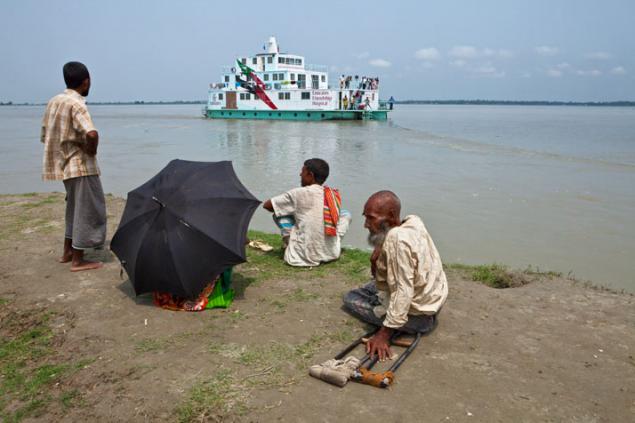
15. The necessary solutions.
A huge number of health workers trained with the support of non-governmental organizations under the name of Bangladesh BRAC, have helped to reduce child mortality and fertility in general.

16. The necessary solutions.
Located afloat 6 days a week, the school-ship, which is powered by solar panels, helping to teach children whose homes are flooded periodically.

17. Lessons for life.
Children gather in a floating school all year round. Studies have shown that educated girls and boys have fewer children than their uneducated peers.

18. While holding the country afloat.
The inhabitants of the islands in the industrial district of Gaibandha hyacinth plants used to create floating gardens where they grow pumpkins, okra and other industrial crops.

19. irrepressible spirit.
Children play Dzhaliahali - village which was completely destroyed by the cyclone Aila in 2009. This storm has forced residents to compete for one of the hundreds of shelters by the cyclone (pictured above), most of which function as centers for communities.

Source:
Residents of villages along the southern coast of Bangladesh must not only cope with one of the highest rainfall in the world; They also live in areas prone to cyclones on soils prone to erosion, which are only a few feet above sea level.
19 photos from here

2. Hold the country afloat.
On saline soils of the south, farmers turned waterlogged rice paddies on land for growing crabs and shrimp.

3. To cope with the sudden flood early farmer Abdur Kaddir (in the background) with its employees collect immature jute stems on an island near the Jamuna Kurigrama. Due to the changing climate the level of seasonal flooding has increased significantly.

4. Employees of the brick factory are trying to protect the plant from flooding near the river Turaga, near Dhaka.

5. Attached to the city.
Under a heavy sky of the rainy season, migrants travel by train back to Dhaka after a visit to their homes, which are located north of the capital. On the other hand there are rice fields, fertile enough, but spoiled salinity in the remote southern areas.

6. Taxis in a boat crossing the river Buriganga, leading to Sadar Ghat - the main water gate of Dhaka, which provide connections to one of the most densely populated cities in the world. The capital Dhaka, located low enough above sea level, is one of the cities most exposed to the threat of rising sea levels.

7. The Tipping Point.
The slums of Dhaka, such as bark (background) overcrowded refugees are a huge problem for the city, which suffers from outdated infrastructure, high levels of poverty and constant flooding.

8. hot, narrow and crowded streets of Dhaka absorb the crowds coming out of mosques after celebrating the end of the holy month of Ramadan. One of the fastest growing cities on earth, Dhaka is full of migrants suffering from floods and storms countryside.

9. Living on an island on the river Jamuna, the fishermen and their families have long been accustomed to floods in their backyards. Depend on seasonal work, these people have long been the world's best experts to adapt to any situation in which the life and the changing climate, they can deliver.

10. High and dry.
In the case of high water on the river, the children from the village of Ali Dzhabed know what to do: climb the bamboo ladder, located in the courtyard and firmly. Seasonal workers who inhabit an ever-changing islands, located in the floodplains of the three largest rivers in Bangladesh, have long been accustomed to such disasters, the number of which is increasing every year.

11. House home.
Standing knee-deep in water, the family Uddin going to dinner. They recently moved their home to the place, trying to avoid flooding in the area of the island Kurigram. Shortly before this photo was taken, the family was planning to dismantle his house and move again.

12. In search of the high ground.
The villagers joined forces to try to move house on Siradzhbad, an island on the river Jamuna, where floods are frequent. This mosque, exploded at noon, has been restored for the evening prayer.

13. Nothing is eternal in the Siradzhbade - the village is home to several hundred people, which is located on the island of the river Jamuna, north of Dhaka. In this photo, volunteers revive the village mosque, which from time to time it is necessary to carry, so it does not disappear under the water.

14. The mobile clinic on a ship, is supported by a charity called FriendshipBD., Serves hundreds of thousands of Bangladeshis living in the islands of the river Jamuna.

15. The necessary solutions.
A huge number of health workers trained with the support of non-governmental organizations under the name of Bangladesh BRAC, have helped to reduce child mortality and fertility in general.

16. The necessary solutions.
Located afloat 6 days a week, the school-ship, which is powered by solar panels, helping to teach children whose homes are flooded periodically.

17. Lessons for life.
Children gather in a floating school all year round. Studies have shown that educated girls and boys have fewer children than their uneducated peers.

18. While holding the country afloat.
The inhabitants of the islands in the industrial district of Gaibandha hyacinth plants used to create floating gardens where they grow pumpkins, okra and other industrial crops.

19. irrepressible spirit.
Children play Dzhaliahali - village which was completely destroyed by the cyclone Aila in 2009. This storm has forced residents to compete for one of the hundreds of shelters by the cyclone (pictured above), most of which function as centers for communities.

Source:












